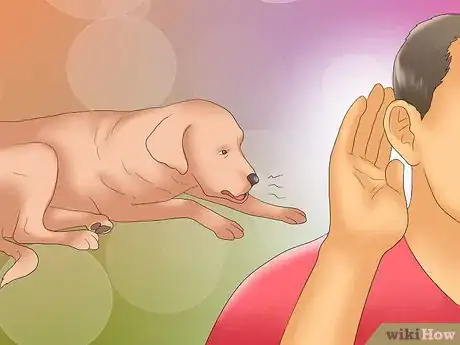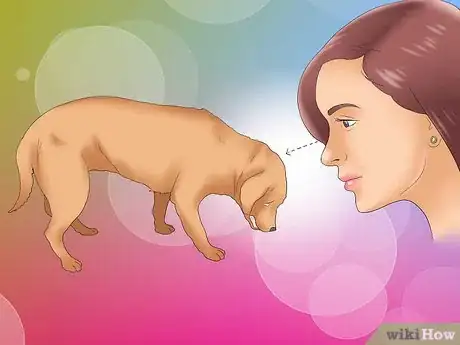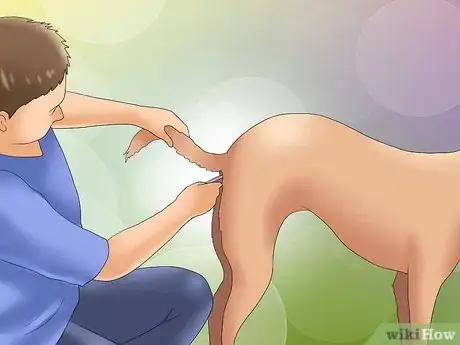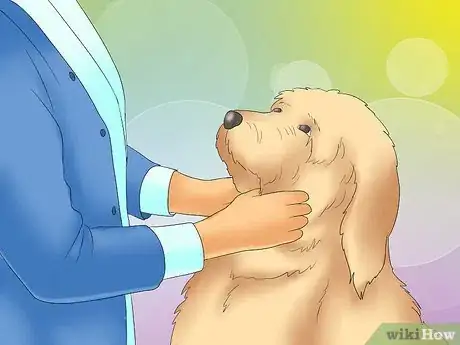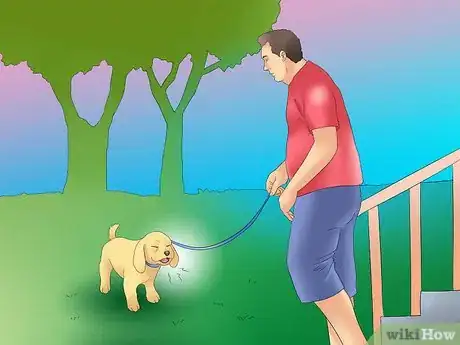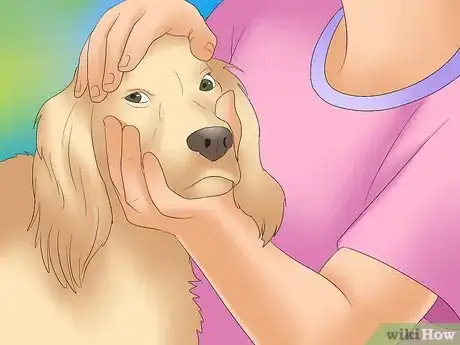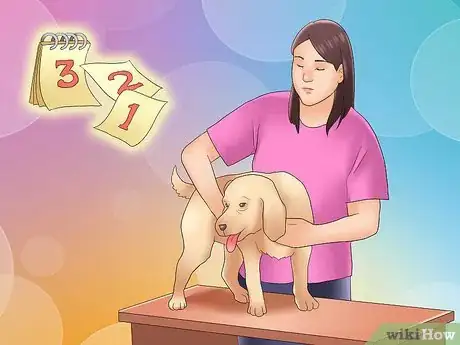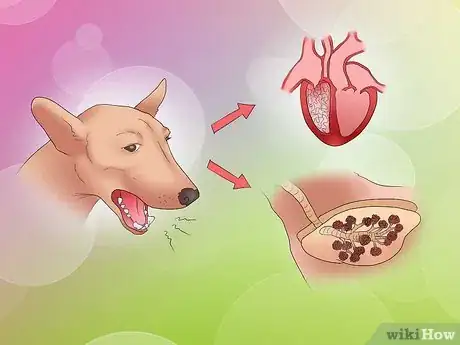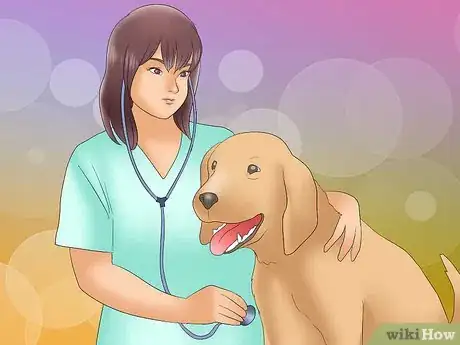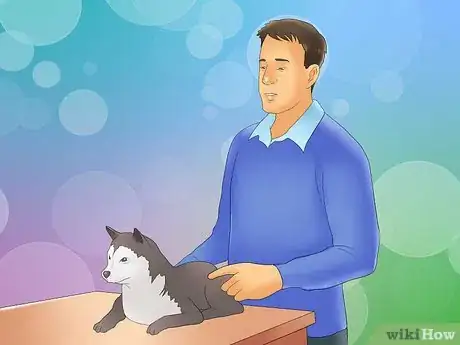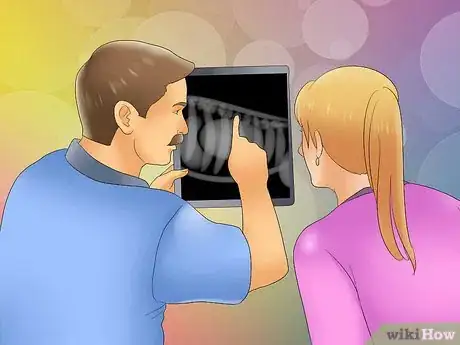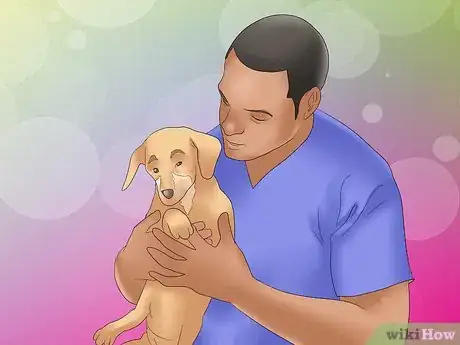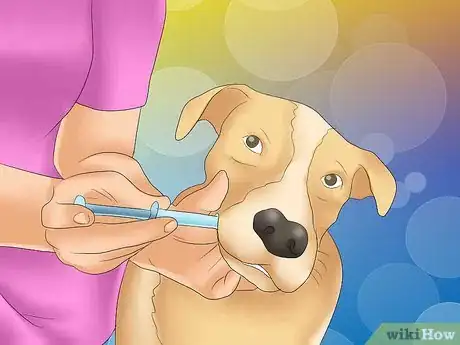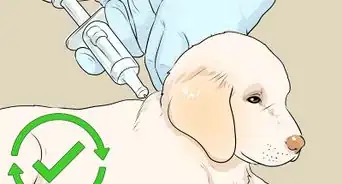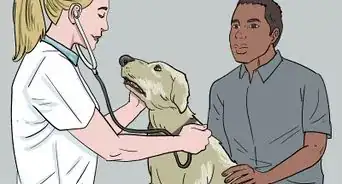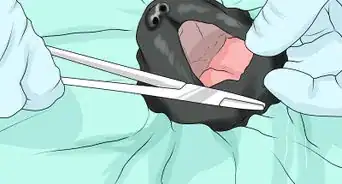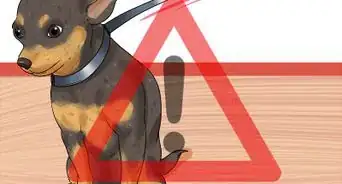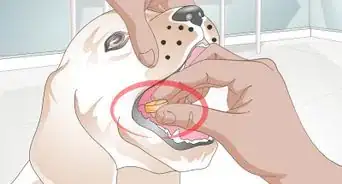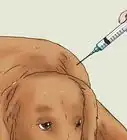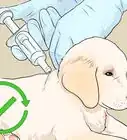This article was co-authored by Natalie Punt, DVM. Dr. Natalie Punt is a Veterinarian and the Founder and CEO of mPet- a smart phone app for pet owners to store, manage and transfer their pets medical records and health information. She specializes in small animal emergency and general medicine and veterinary practice economics. Dr. Punt holds a BS in Biochemistry and Molecular Biology from The University of California, Davis, an MS in Biochemistry from The University at Buffalo, and a DVM from Western University of Health Sciences.
This article has been viewed 24,028 times.
Kennel cough is a respiratory infection that passes readily between dogs. The name "kennel cough" derives from it being a condition caught by dogs sharing a common air space, such as when in a boarding kennel or rescue shelter. However, a more correct name is infectious tracheobronchitis (or ITB). This term describes the condition's infectious nature and that it causes inflammation of the windpipe and bronchi (the tube like airways taking air deep into the lungs). In order to recognize kennel cough, you will have to learn about its symptoms and rule out other causes of cough.
Steps
Recognizing Signs of Kennel Cough
-
1Listen to your dog’s cough. The first and most obvious symptom of this condition is a cough. This cough starts suddenly, often overnight, and is a harsh, barking, hacking cough. Many owners phone a vet clinic and describe their pet as having "something stuck in his throat" because of the harsh, hacking, retching sound the dog makes.[2]
- This is no quiet cough, but a whole body movement where the dog extends his neck to straighten his airway and coughs so forcefully that his whole body shudders.
-
2Monitor the cough. Often a trigger starts the dog coughing, such as inhaling cold air which tickles the sensitized windpipe, or the dog pulls on his collar which pinches his windpipe and starts an episode of coughing.
- Once they start coughing, some dogs find it difficult to stop and can cough anywhere from a few minutes to hours.
Advertisement -
3Look for vomiting linked to coughing. When the whole body is involved in a cough, muscular contractions of the abdomen sometimes make a dog vomit, but this in not because of a stomach disorder; it is a secondary effect of the physical act of harsh coughing.
- Some owners mistakenly believe the dog has a vomiting/gastrointestinal problem, rather than a cough that is so severe as to cause vomiting. A veterinarian, after examining the dog, will swiftly clear up this confusion.
-
4Check your dog for fever. Some dogs may be feverish, and running a temperature can put them off their food. A feverish dog may radiate heat and his nose, ears, and paws may feel warmer than your own body temperature. A dog's temperature should be below 39 C, above this is considered high, and above 39.5 C is feverish.[3]
- The gold standard is to take the dog's temperature with a rectal thermometer. To do this a digital thermometer (a regular human thermometer is fine—just don't reuse it on a person) is gently inserted into the anus, keeping the thermometer parallel to the line of the backbone.
- Never apply pressure, if the thermometer does not slip into the rectum with gentle forward movement then stop and try again. This is not a painful procedure and how cooperative the dog is depends on his temperament. If your dog resents having his temperature taken, it is best to stop and let the professional deal with it!
-
5Check to see if your dog’s lymph nodes are swollen. Sometimes the lymph nodes in the throat (the "glands" in the throat) swell as the body mounts a fight back against infection. These glands are located on the left and right hand side of the neck, in the angle of the jaw. They are normally difficult for the untrained person to feel. Enlargement makes them easier to locate.
- In a Labrador sized dog you may feel a firm, smooth swelling (about the size of a walnut) in the angle where the jawbone meets the throat.
- Anything above walnut-sized would be considered abnormal in a dog of this size.
-
6See what happens when your dog goes outside. Another symptom of this condition is a very sensitive windpipe. The infectious agents cause inflammation in the lining of the windpipe, which has the effect of sensitizing it and making it more "ticklish". Thus, the temperature change going from a warm house out into cold air can trigger a coughing episode.
- A simple test many veterinarians use when diagnosing kennel cough is to gently pinch the wind pipe. If the dog has kennel cough this precipitates a harsh cough (this is not the case if the dog has heart disease or another cause of a cough). You may notice this effect when your dog pulls on the collar and he coughs.
-
7Understand that some dogs may present with extra symptoms. Some dogs may have other signs of an upper respiratory infection such as a sticky yellow-green discharge from the eyes, or clear nasal discharge. However, unlike in people with a heavy cold or flu, these are not typical symptoms of kennel cough and the absence of these signs is common.
-
8Know how long this condition will last. Kennel cough lasts for 7 to 21 days and your dog should be considered infectious to other canines while he is still coughing. Once the cough stops, he is no longer infectious.[5]
- Most viral infections last about 17 days before they can be resolved by the dog's own immune system, however bacterial infections, specifically from mycoplasma persist and can last up to 30 days.
Ruling Out Other Causes of Coughs
-
1Be aware that a cough is a sign of many different conditions. A cough is quite a general sign and can occur not just as a result of infection, but because of bronchitis (thickening of the airways), heart disease, lung tumors, and lungworm.
- It can be difficult even for a trained veterinarian to diagnose the reason for a cough, without the aid of imaging such as x-rays to look at the lungs, and ultrasound to study the heart.
- However, the distinctive signs of kennel cough include the harsh hacking nature of the cough, the sudden onset, tracheal sensitivity, and enlarged lymph nodes in the throat.
-
2Get your vet to take a look at your dog’s heart. The vet will listen to see if a heart murmur is present (the absence of a murmur makes heart disease less likely) and to listen to the nature of the lung sounds.
- A heart-related cough often causes gurgly, bubbly sounds in the lungs - again, it can be difficult to differentiate pulmonary oedema (fluid retained on the lungs because of heart failure) from pneumonia, by sound alone. In this case the vet will run blood tests to see if the dog is mounting an immune response to an infection (a raised white cell count).
-
3Know that bronchitis will last longer than kennel cough. Conditions such as bronchitis are usually long term and worsens gradually over weeks to months. Also, when a dog has bronchitis, the lungs tend to have a distinctive harsh crackly sound because of the thickened and stiff nature of the airways.[7]
-
4Check for lung tumors. Lung tumors cause a cough when they grow to a size where they press on an airway. A diagnosis cannot be made on a physical exam alone and radiography is essential is a lung tumor is suspected.
-
5Have your dog tested for lungworm. Lungworm infection is a serious lung infection caused by angiostrongylus vasorum. These worms invade the lungs and impair the body's ability to clot blood.[8]
- Labored breathing, along with pale gums (because of hemorrhage), in a dog not routinely treated against lungworm, should raise suspicion of this life-threatening condition. A blood test is available that gives a "yes" "no" answer about lungworm infection.
-
6Get antibiotics for your dog. If suspicious of kennel cough many veterinarians will treat with antibiotics and see if the symptoms resolve (diagnosis by treatment!) If the cough remains then further tests are warranted.
Helping a Dog Who Has Kennel Cough
-
1Determine how poor your dog is feeling before seeking help from the vet. How poorly your dog is influences whether it is essential he is seen by a veterinarian or not. If he has kennel cough but is otherwise bright, has a normal temperature, and eating well (as is quite common) then he does not necessarily need to see the vet, other than to confirm the condition.
- Fit healthy dogs will mount an immune response and destroy the virus within 7 to 21 days.
-
2Keep your dog away from other dogs until the cough has gone. In this condition, it is the coughing phase that is infectious. Other dogs can potentially pick up infection by contact with aerosol droplets on surfaces, so regular washing of floors (with dilute bleach) and bedding is advisable.
- Anecdotally, not all the dogs living in one house come down with kennel cough—it seems exposure to a low dose of virus and a healthy immune system are enough to see off infection in some dogs.
-
3Give your dog a medication for his cough. The cough can be tiring for the dog, especially if it keeps him awake at night. It is fine to give a codeine based human cough medicine (a teaspoon/5ml per large dog, half a teaspoon for dogs under 10kg) at night.[9]
- Do not attempt to stop the cough 24 hours a day because the cough serves to move mucus and bacteria up out of the lungs. However, it is ok to settle the cough at night so that your dog can get some rest.
-
4Seek veterinary help if your dog’s symptoms get worse. Always seek veterinary advice if you are uncertain the dog has kennel cough, if he:
- Is lethargic
- Coughing so much he vomits
- Not eating.
Expert Q&A
-
QuestionWhat is kennel cough?
 Natalie Punt, DVMDr. Natalie Punt is a Veterinarian and the Founder and CEO of mPet- a smart phone app for pet owners to store, manage and transfer their pets medical records and health information. She specializes in small animal emergency and general medicine and veterinary practice economics. Dr. Punt holds a BS in Biochemistry and Molecular Biology from The University of California, Davis, an MS in Biochemistry from The University at Buffalo, and a DVM from Western University of Health Sciences.
Natalie Punt, DVMDr. Natalie Punt is a Veterinarian and the Founder and CEO of mPet- a smart phone app for pet owners to store, manage and transfer their pets medical records and health information. She specializes in small animal emergency and general medicine and veterinary practice economics. Dr. Punt holds a BS in Biochemistry and Molecular Biology from The University of California, Davis, an MS in Biochemistry from The University at Buffalo, and a DVM from Western University of Health Sciences.
Veterinarian "Kennel cough" is a common name used to encompass about 14 different causes for upper respiratory disease in dogs.
"Kennel cough" is a common name used to encompass about 14 different causes for upper respiratory disease in dogs. -
QuestionMy vet says my dog has heart disease, but he has all the symptoms of kennel cough. What should I do?
 Community AnswerIf you don't trust the vet's diagnosis, then you could take your dog to another vet to get a second opinion. If the other vet also says your dog has heart disease, then you should assume that's the problem.
Community AnswerIf you don't trust the vet's diagnosis, then you could take your dog to another vet to get a second opinion. If the other vet also says your dog has heart disease, then you should assume that's the problem. -
QuestionWhat type of cough syrup can I use for dogs?
 Community AnswerYou can ask your vet and only buy the medicine they prescribe.
Community AnswerYou can ask your vet and only buy the medicine they prescribe.
Warnings
- Applying force on the thermometer in the wrong plane could potentially perforate the lining of the bowel with possibly life-threatening consequences to the dog. Always be gentle.⧼thumbs_response⧽
Expert Interview
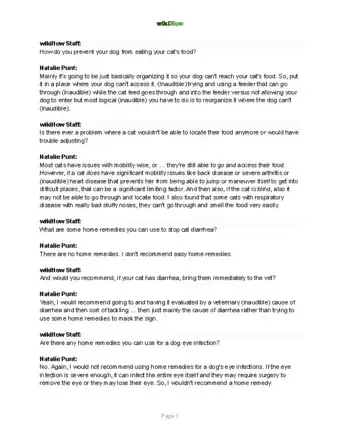
Thanks for reading our article! If you'd like to learn more about dogs' health, check out our in-depth interview with Natalie Punt, DVM.
References
- ↑ Small Animal Internal Medicine. Nelson and Couto. Publisher Mosby. 3rd edition. p288
- ↑ Small Animal Internal Medicine. Nelson and Couto. Publisher Mosby. 3rd edition. p288
- ↑ 5-minute Veterinary Consult: Canine and Feline: Tilley & Smith. Publisher Williams and Wilkins. p 1115
- ↑ Small Animal Internal Medicine. Nelson and Couto. Publisher Mosby. 3rd edition. p307
- ↑ Small Animal Internal Medicine. Nelson and Couto. Publisher Mosby. 3rd edition. p117
- ↑ 5-minute Veterinary Consult: Canine and Feline: Tilley & Smith. Publisher Williams and Wilkins. p 407
